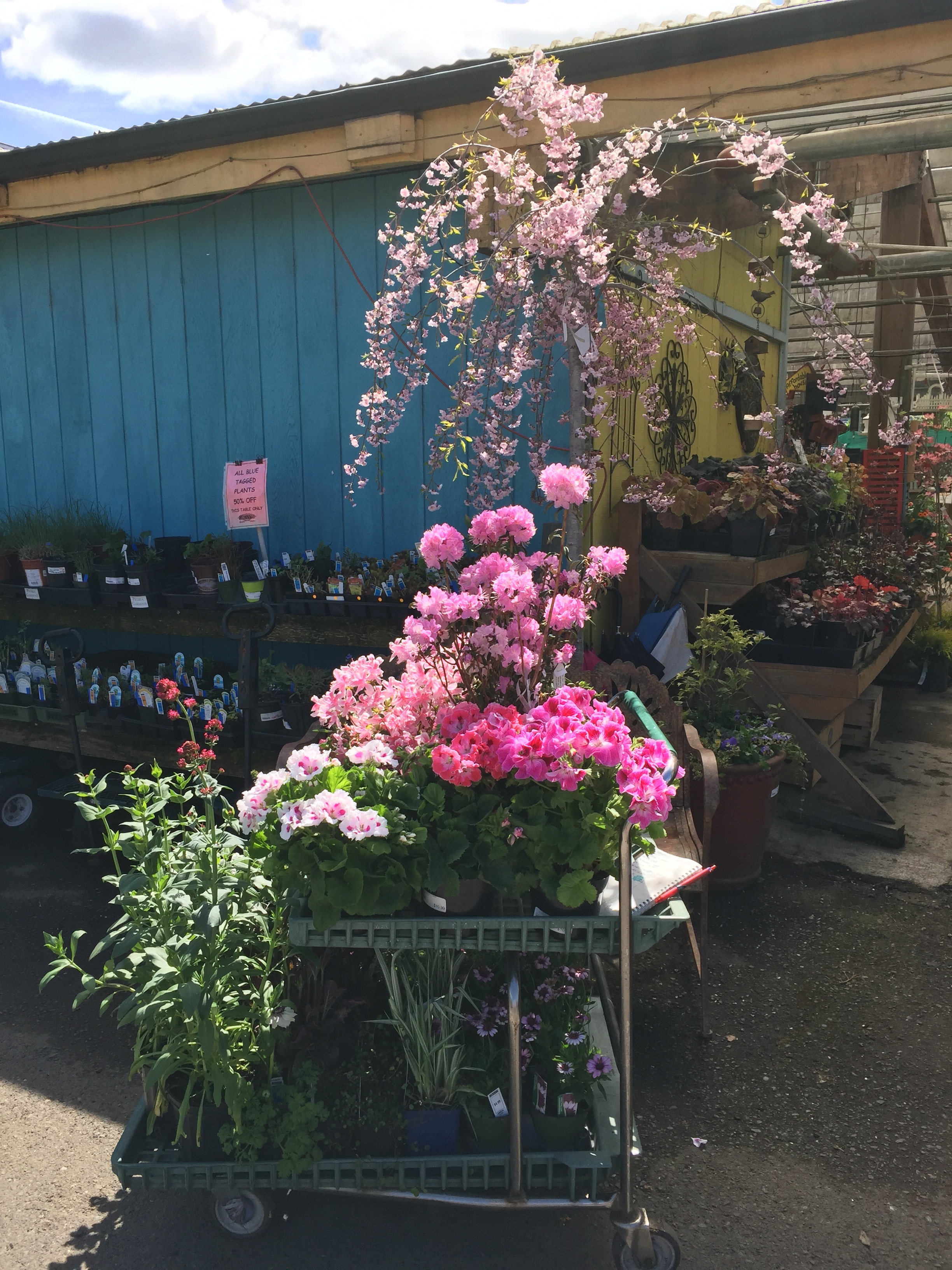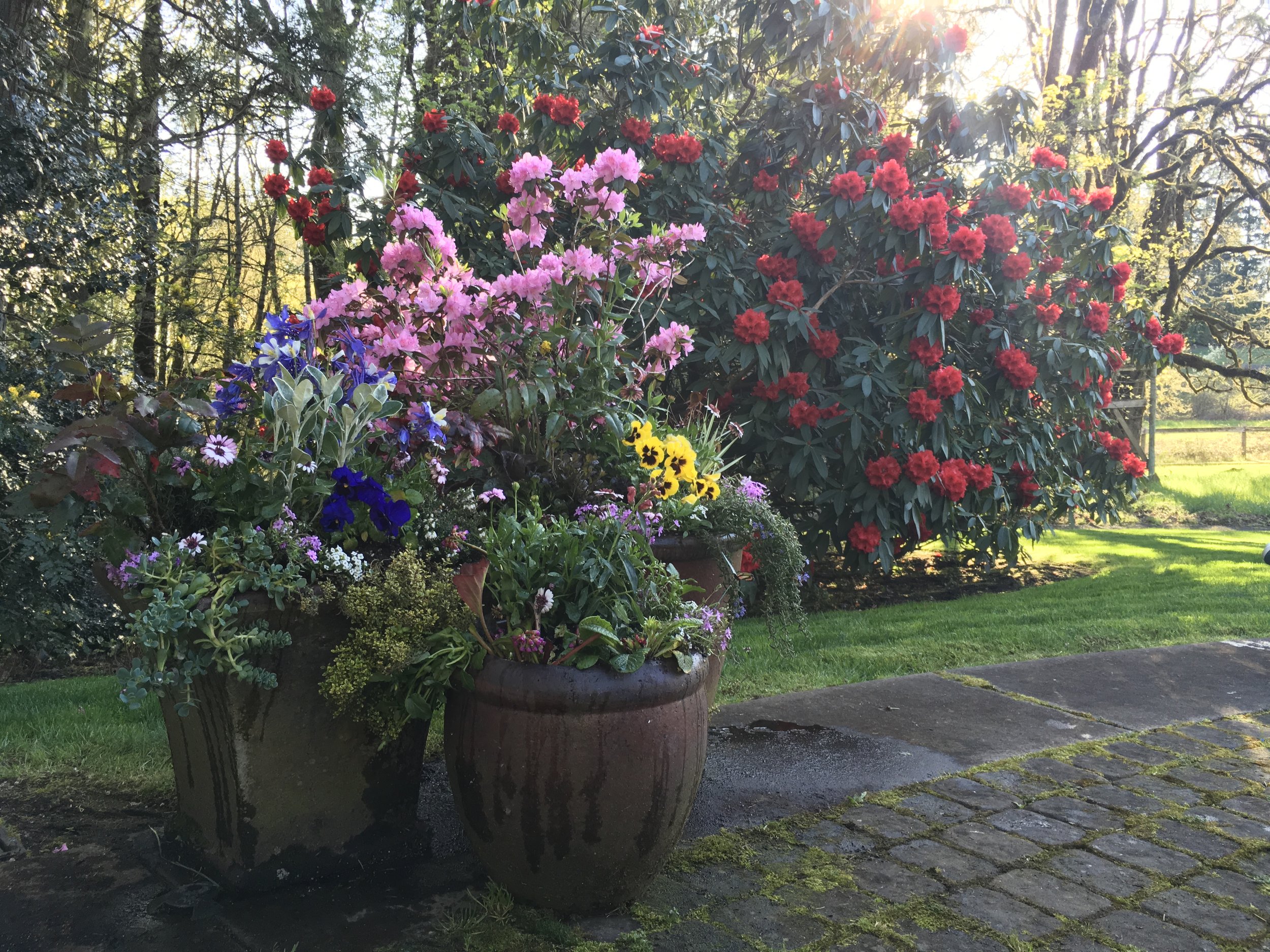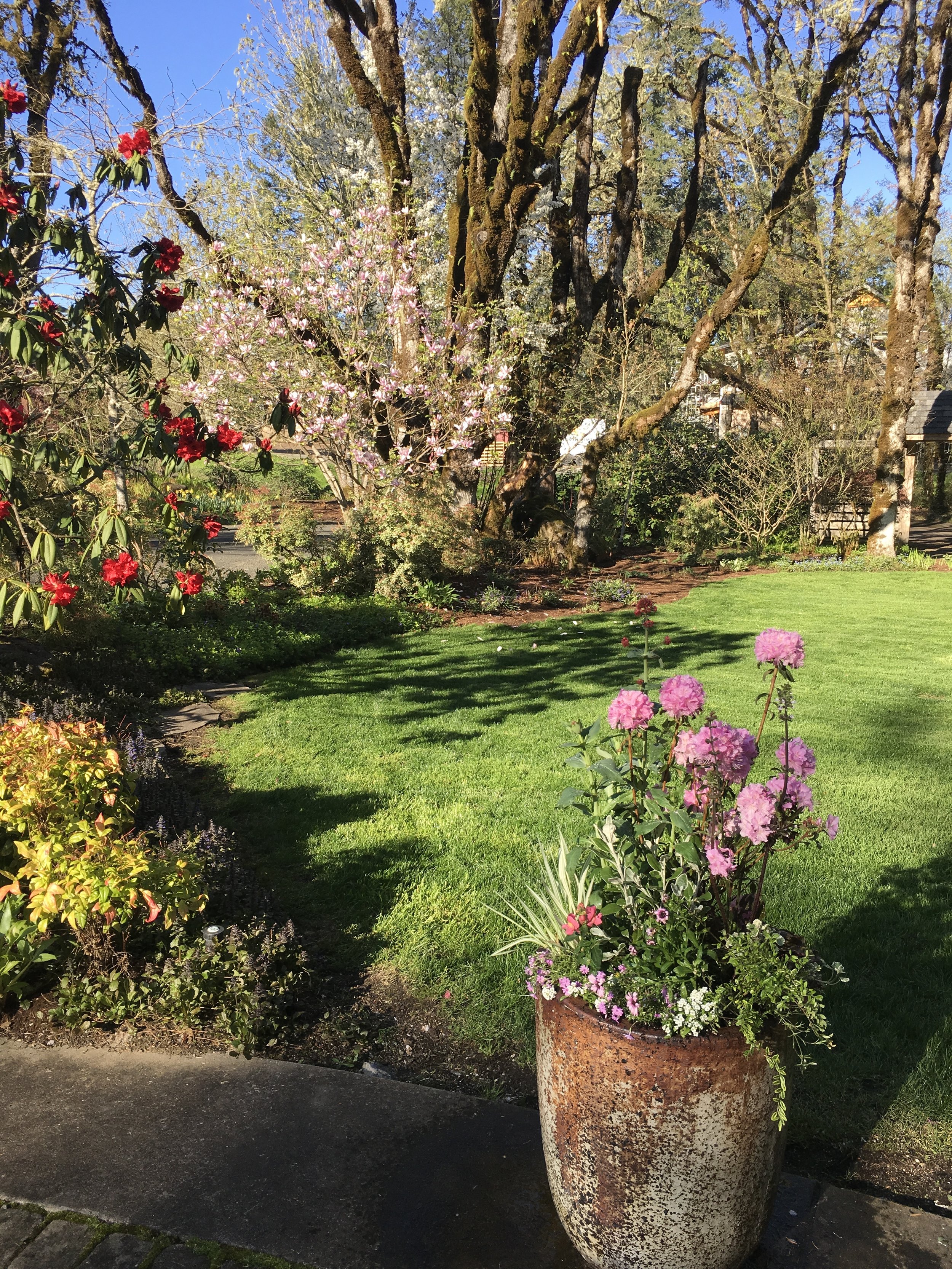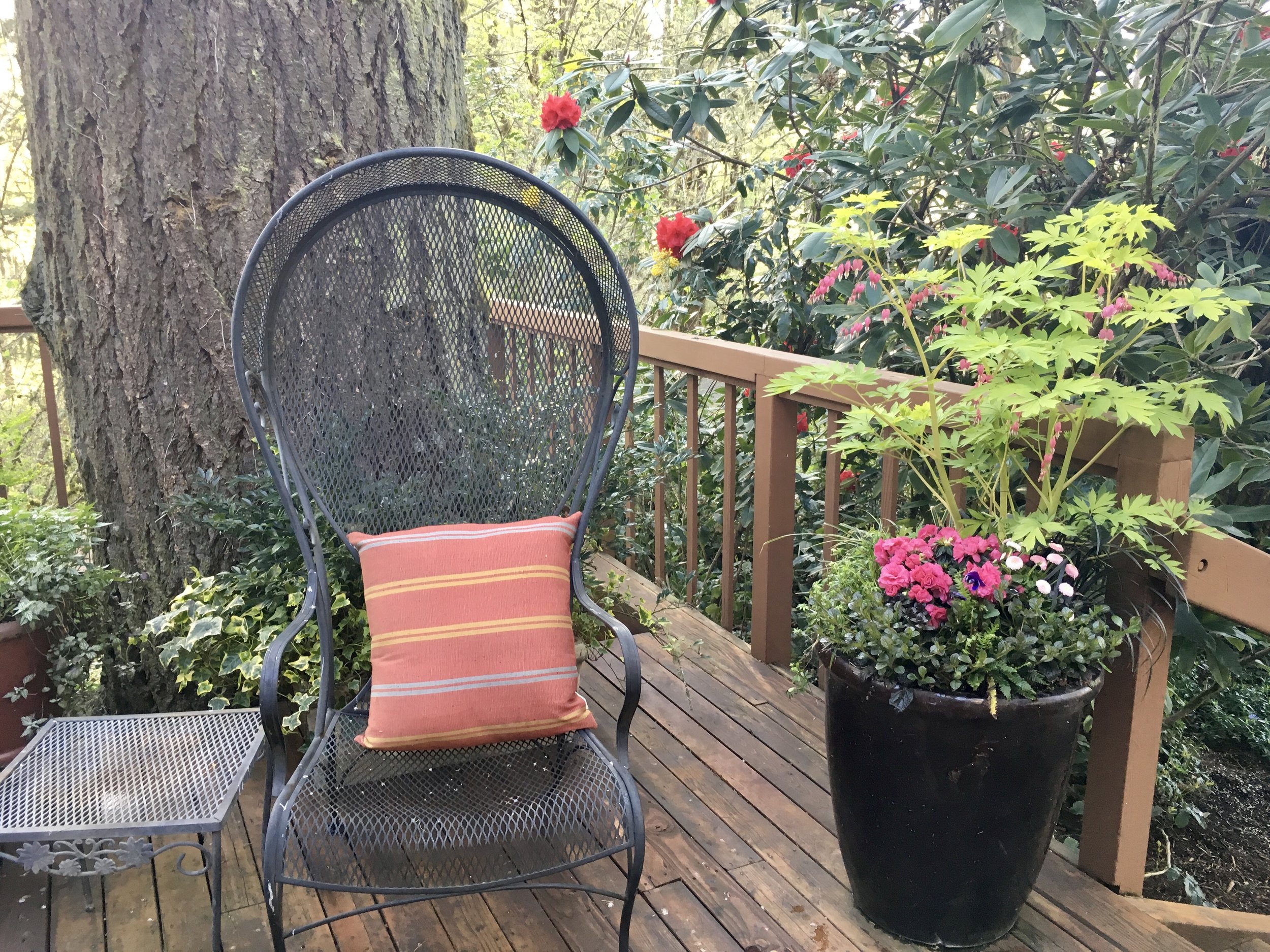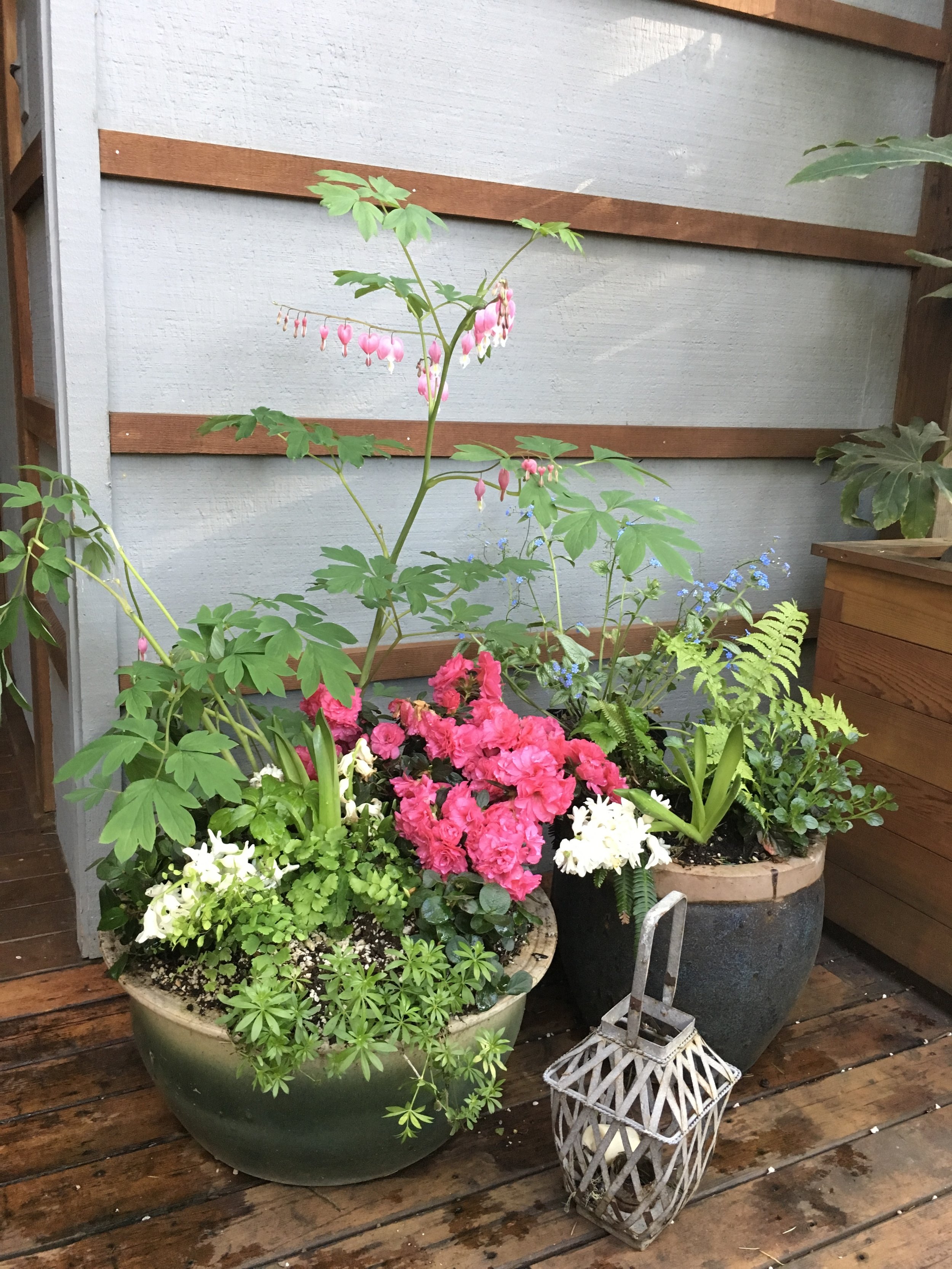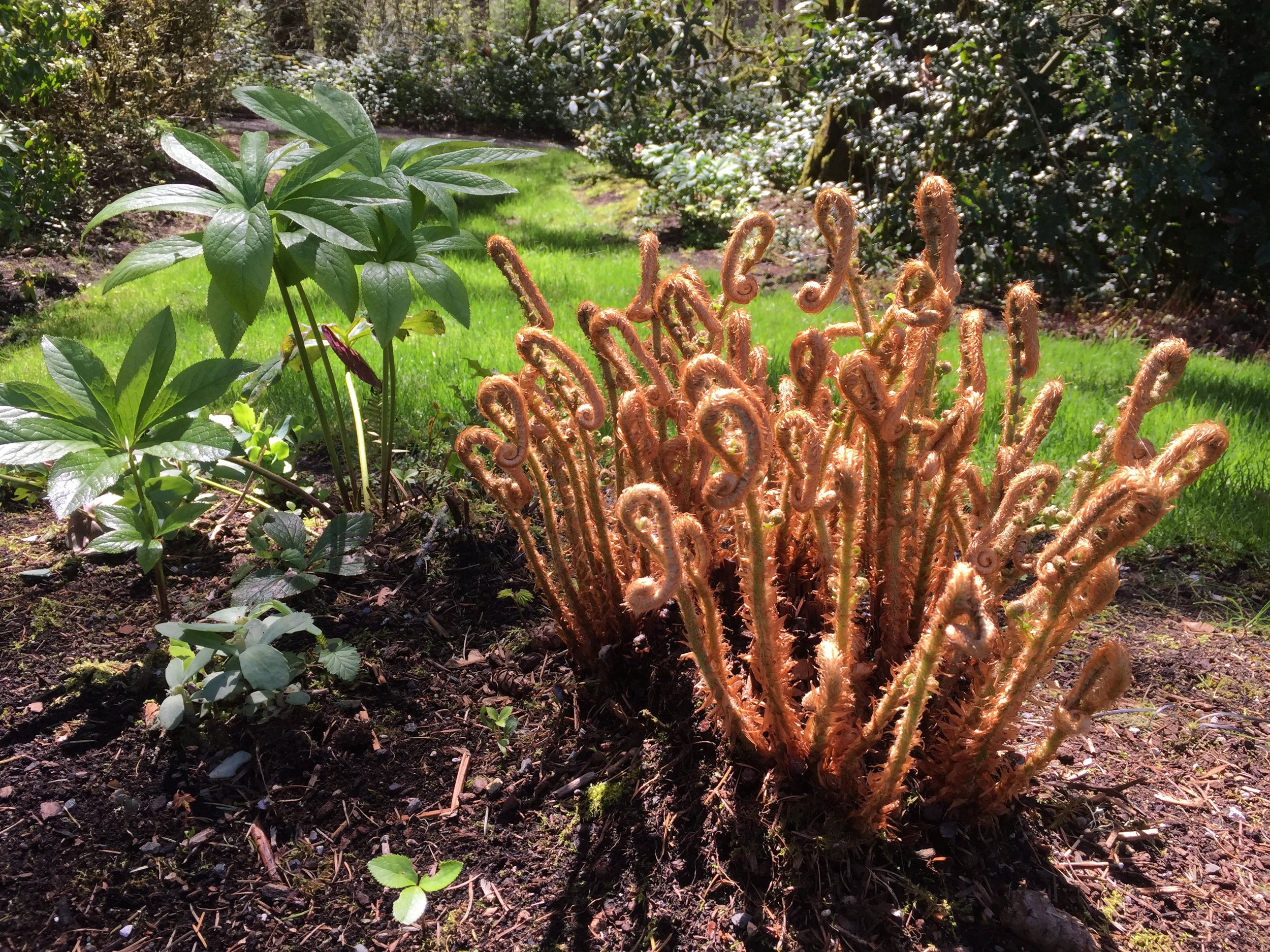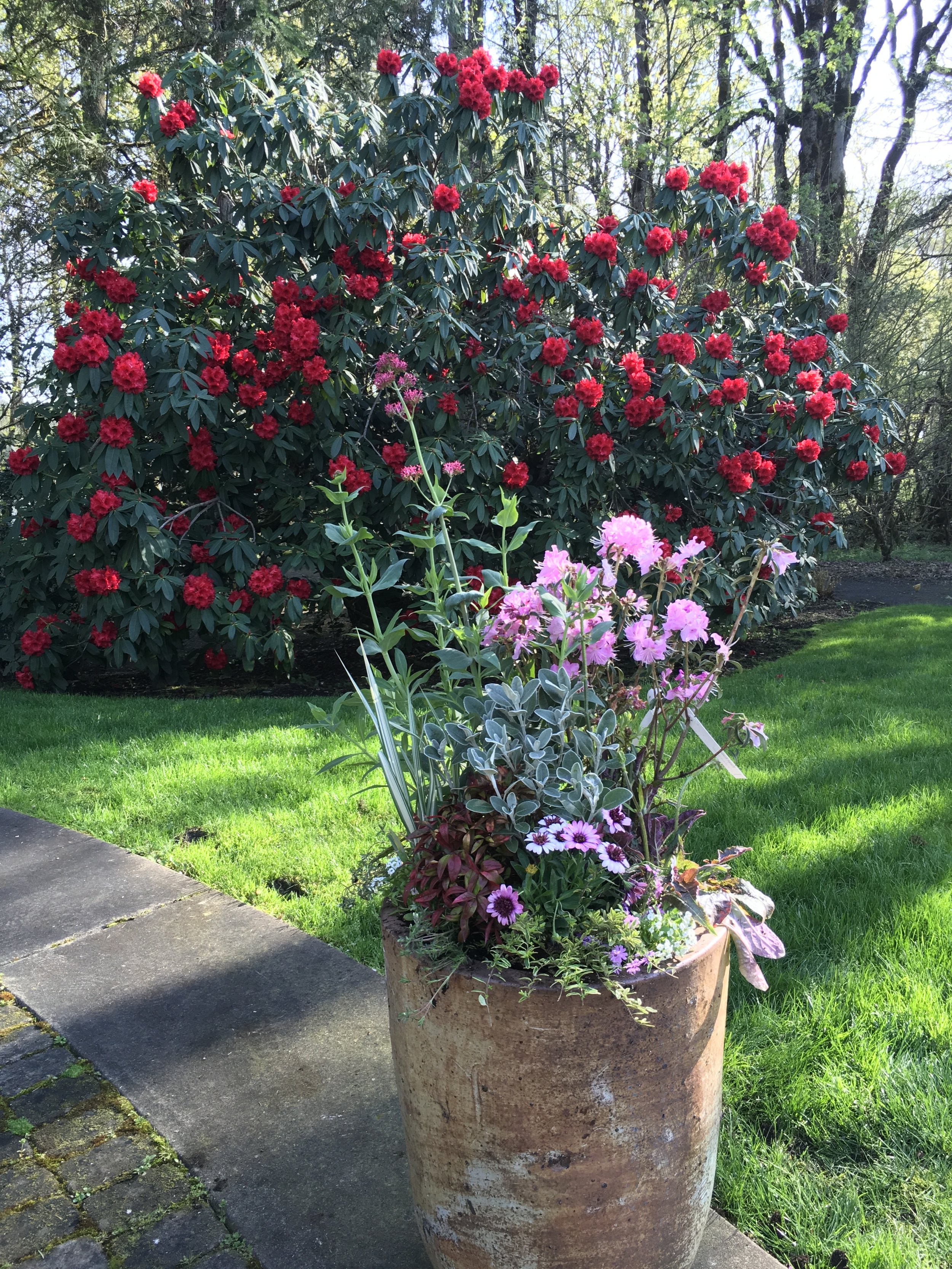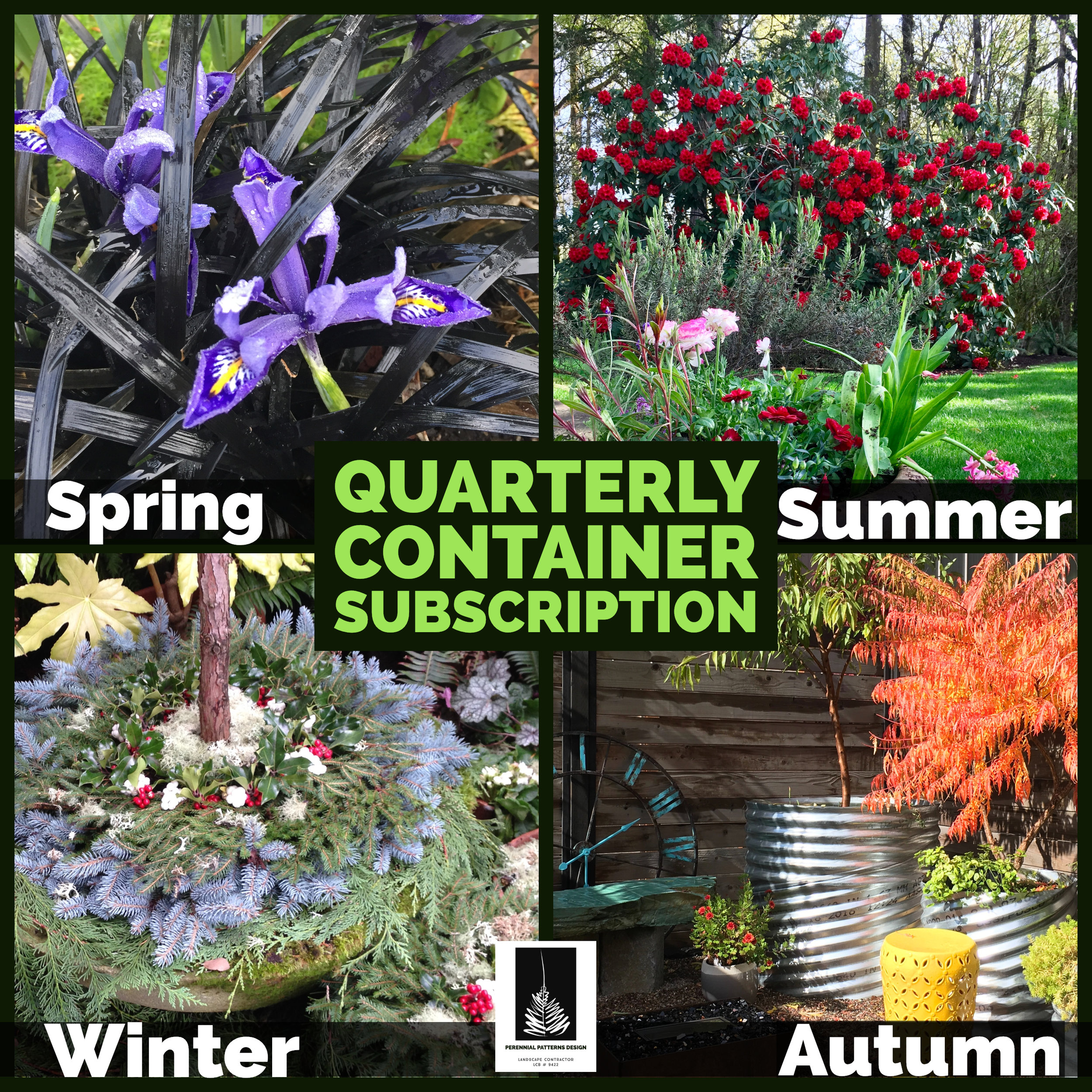Check out the article on Living Walls / Green Walls in the latest issue of Eugene Magazine.
VERTICAL PLANTING
THE ADVANTAGES OF PLANTING A LIVING WALL
By Cheryl Rade
We all know about house plants and their many environmental advantages, but there seems to be a new trend that’s taking root these days, especially in urban areas. They’re called “living walls”—also referred to as “green walls” or “vertical gardens”—and their popularity is sprouting.
Tom Dixon and Marty Meckel’s backyard Green Wall, designed and built by Perennial Patterns Design, 2018
The Green Wall provides 204 SF of growing surface on a 12 SF footprint.
Landscape designer and contractor Noah Guadagni, owner of Perennial Patterns Design in Eugene, has also noticed an increase in the popularity of living walls. “People like to have greenery in their environment—it’s nice to be around and live in,” he says.
Guadagni, who’s also an adjunct instructor at the University of Oregon teaching landscaping design and various other classes, says the first steps in constructing a living wall are selecting an optimal location and measuring the wall’s height and width. Once that’s done, you need to build a wooden frame, cover it with geotextile fabric to hold the soil volume in place, and then reinforce with metal hog wire. An irrigation system is also required.
For an outdoor wall, Guadagni says, it’s best to use plants that are a little on the tougher side to withstand the cold weather. “This way, you can multiply your growing capacity,” he says.
Green Wall during first summer of explosive growth. Tomatoes, Thyme, Sage, Rosemary, and Sedums did especially well.
Guadagni explains that as cities grow increasingly dense in population, people have less space to grow botanicals. “Homeowners want a place to grow herbs, edibles, and culinary plants,” he says, and green walls make excellent gardens in urban settings.
The advantages of living walls are endless, Guadagni says. “They’re bringing more green, growing things into our everyday lives and into that urban environment. . . . And they are very accessible from a practical standpoint—you can garden on your feet. Plus, you get all the ecological benefits, like bees and insects. They’re sustainable and they cut away your carbon footprint. The more that we can integrate nature into our environment, the better.”
Living green walls are remarkable and necessary because they provide so many valuable aesthetic benefits, too, especially in healthcare facilities, according to Michael Geffel, a landscape architect and visiting professor at the UO. “Because studies have shown that patients who have a view of the landscape heal faster and go home earlier,” he says. “Landscape also enhances employees’ performance by reducing stress and increasing productivity.”
Geffel, who had a professional practice before accepting his position at the UO, says there are many reasons why living walls are in such high demand these days. Their biggest selling point, he advises, is that “they’re vertical and they take up less space.” He says many folks are also seeking more greenery in their homes and offices simply because it’s beautiful.
Two of those folks are local couple Tom Dixon and Marty Meckel, who reside in Eugene’s Friendly neighborhood. They have a large wall (8 feet tall and 12 feet wide) in their backyard, built last summer by Guadagni and his crew. “We just wanted to hide our garbage cans,” Meckel says. “And we gave Noah free rein to do what he wanted; he’s the one who adapted the wall to the space.”
Green Walls allow you garden on your feet.
The couple’s living wall was installed with peppers, cherry tomatoes, and other edible greens planted on the hot, sunny side, and herbs (including oregano, basil, and thyme) planted on the opposite side. “It was great to have all those herbs,” Dixon says. “The access was so easy. I just had to walk out the door and get them.”
Dixon and Meckel note that last year’s wall literally exploded with growth and produce. “Our tomatoes grew unbelievably big; the vines were over the top of the wall,” Meckel says.
Dixon nodded in agreement, adding proudly, “My tomatoes were ripening before anyone else’s.”
Next year’s crop will be different from last year’s, Dixon adds. “We haven’t really talked about it yet, but I think we want more flowers.”
Meckel went on to say that the living wall has exceeded both their expectations. “This is so perfect and we are so lucky,” she says.
Dixon concurs, “This is exactly what we wanted.”
The origins of living walls
Although living walls may seem like a hot new trend in the world of landscaping and architecture, they are not. They actually date back to ancient times, as when King Nebuchadnezzar II built the Hanging Gardens of Babylon as a gift for his wife.
Those gardens, which are considered one of the Seven Wonders of the Ancient World, are said to have been the first vertical living walls that included a built-in irrigation system. The structure was called an engineering feat with its numerous rows of flowers, plants, and other greenery that covered tall brick walls. Though sometimes considered a myth, the Hanging Gardens of Babylon continue to inspire modern-day landscape and architectural designers.
Stanley Hart White, a professor at the University of Illinois in the 1930s, just happened upon the idea of a vertical green wall. He called his creation “Botanical Blocks” and even tried to patent it. His ideas are still being used today.
The most famous modern maker of living walls is Patrick Blanc, a French botanist employed by the French National Center for Scientific Research. He has authored several tomes on tropical plants and has designed and installed countless living walls in parks and buildings throughout the world. His work can be found in numerous places, including Berlin, Sydney, and at the French Embassy in New Delhi.
One final picture illustrating the multiplying power of Growing UP






